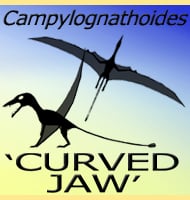Nebulasaurus
In Depth Although based only upon the description of the braincase, it has been enough to not only identify Nebulasaurus as a new eusauropod dinosaur, but also further hints that during the middle Jurassic Asia had a very diverse range of sauropod dinosaurs. By the late Jurassic this diverse range seems to have thinned out … Read more
